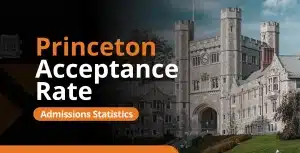Why You Should Join the Secondary Student Training Program (SSTP)
The Secondary Student Training Program (SSTP) Iowa, hosted by the University of Iowa, represents an unparalleled opportunity for students. They will engage in advanced research, gain valuable university experience, and develop a broad spectrum of skills.
What is the Secondary Student Training Program at the University Of Iowa?
The Secondary Student Training Program (SSTP) at the University of Iowa is a prestigious pre-college initiative offering a comprehensive research experience to high-achieving high school students in grades 10-11. The Belin-Blank Center for Gifted Education and Talent Development administers SSTP to immerse participants in the research world under the guidance of university faculty mentors.
The program spans over five and a half weeks during the summer and is available in residential and online formats to accommodate students from various locations. Participants engage in original research projects across a wide range of STEM fields, culminating in producing a research brief and an academic poster.
Successful program completion provides students with valuable hands-on experience in their chosen field. It awards them three semester hours of university credit, setting a solid foundation for their future academic and professional pursuits.
Who Is Eligible to Apply for SSTP?
Eligibility for the Secondary Student Training Program (SSTP) Iowa is specifically designed to identify and nurture the talents of high school students demonstrating a strong interest in and research potential.

The program is open to students currently in the 10th or 11th grade at the time of application, reflecting its commitment to providing early research opportunities to academically talented individuals. The competitive application process seeks students who exhibit exceptional academic records, a passion for science and research, and the maturity to handle the demands of a rigorous academic environment.
In addition to domestic students, SSTP Iowa welcomes applications from international students, offering a unique opportunity for culturally diverse and intellectually vibrant cohorts to collaborate and learn from each other.
Prospective participants are evaluated based on the quality of their essays, transcripts, and letters of recommendation, emphasizing aligning their research interests with the expertise of participating faculty mentors.
Why You Should Apply At Secondary Student Training Program (SSTP) Iowa
Applying to the Secondary Student Training Program (SSTP) at the University of Iowa can really change things for high school students who love research and science. Here are great reasons to think about applying:
1. Hands-On Research Experience
The hands-on research experience at the Secondary Student Training Program (SSTP) Iowa is a good reason for high school students to apply. Hosted by the University of Iowa, this program offers students in grades 10 and 11 a unique chance to dive into scientific inquiry.
You’ll work alongside university faculty mentors in cutting-edge laboratories and research facilities. This experience covers various disciplines, from Anatomy & Cell Biology to Neuroscience and Biomedical Engineering, allowing you to conduct original research in areas that interest you the most.
The SSTP Iowa stands out because of the depth of the research experience. You’re not given token projects but are integrated into ongoing research efforts that contribute to meaningful work with real-world applications.

2. Wide Range of Research Areas
The wide range of research areas available through the Secondary Student Training Program (SSTP) Iowa attracts intelligent high school students. Here are some key research areas at SSTP Iowa:
- Anatomy & Cell Biology
- Biology
- Biomedical Engineering
- Chemistry
- Civil & Environmental Engineering
- Epidemiology
- Geographical & Sustainability Sciences
- Health & Human Physiology
- Industrial & Systems Engineering
- Neurology
- Neuroscience & Pharmacology
- Orthopedics & Rehabilitation
- Pathology
- Pediatrics
- Pharmacy
- Psychiatry
- Psychological & Brain Sciences
- Psychological & Quantitative Foundations
- Religious Studies
These diverse research disciplines guarantees students with varied scientific interests can find a niche that resonates with their academic goals and curiosity.
By participating in SSTP Iowa, you won’t be confined to a narrow set of topics. Instead, you’ll explore an array of subjects, gaining a broader understanding of the scientific landscape. Whether you are fascinated by the complexities of the human brain, the nuances of environmental engineering, or the intricacies of pathology, SSTP Iowa provides an opportunity to participate in groundbreaking research.

3. Earn University Credits
Participating in the Secondary Student Training Program (SSTP) Iowa lets you earn university credits while still in high school. This prestigious program offers three (3) semester hours of undergraduate credit once you complete it.
This also provides you with a clear academic advantage to help you start college early.
Earning university credits through SSTP Iowa demonstrates the program’s demanding nature and the high standards expected of its participants. You’ll be treated as an emerging scholar, exploring your chosen field deeply with guidance from university faculty.
4. Enhance Academic Skills
Enhancing your academic skills is a key part of the Secondary Student Training Program (SSTP) Iowa. This immersive research experience extends beyond traditional classrooms to develop important academic and life skills.
You’ll sharpen your critical thinking, analytical reasoning, and problem-solving abilities by conducting original research under faculty mentorship.
The program also emphasizes effective communication skills. You’ll engage in complex research activities and learn to present your findings both in writing and through oral presentations. This experience helps you convey complex scientific concepts clearly and compellingly to diverse audiences.

5. Mentorship from Experts
Expert mentorship is a key element of the Secondary Student Training Program (SSTP) Iowa. Faculty researchers guide you through the full research process, from developing a hypothesis to presenting your results. These mentors guide students through the complexities of conducting original research, from formulating a hypothesis to presenting their findings.
The mentorship experience at SSTP Iowa is profound because it offers academic guidance and a model for professional conduct in a scientific setting. Students learn directly from experts about the nuances of research methodologies, the importance of ethical considerations, and how scientific inquiry can contribute to broader knowledge and societal well-being.
6. Competitive Advantage for College Applications
Gaining a competitive advantage for college applications is a significant reason why high school students with a passion for research should consider applying to the Secondary Student Training Program (SSTP) Iowa. Participation in SSTP Iowa is an immersive research experience and an achievement that can distinguish a student in competitive college admissions.
Colleges and universities seek applicants committed to their academic interests, especially in STEM fields. Completing SSTP Iowa demonstrates that students have tackled advanced, college-level research, highlighting their initiative, curiosity, and dedication—qualities highly valued by top institutions.
7. Build a Professional Network
Building a professional network is a vital reason to participate in the SSTP Iowa. It gives students an early opportunity to build connections that can help with their academic and career goals. SSTP Iowa facilitates interactions with esteemed faculty and mentors from the University of Iowa and like-minded peers who share a passion for research and science.
This research program creates a collaborative environment where students can engage with professionals at the forefront of their respective fields. These interactions provide insights into various career paths, the latest research developments, and the challenges and rewards of a career in STEM.
Such connections can be invaluable as students navigate their future academic and professional journeys, offering guidance, mentorship, and internships or collaborative project opportunities.

8. Experience College Life
Experiencing college life through SSTP Iowa is incredibly valuable, giving high school students a look at what life is like on a university campus. Through this program, participants engage in advanced research, live in residence halls, navigate the campus, and participate in social and academic activities typical of college life.
As an SSTP participant, you will work with your research group from 9 a.m. to 4 p.m. Central Time, Monday through Friday, and attend required evening activities. There is also a course seminar every Wednesday night from 6 p.m. to 7 p.m. There are also organized activities on weekends. SSTP staff will supervise students during all these activities.
Participants in the program will be accommodated in a residence hall close to the Blank Honors Center on the University of Iowa campus. Most of the program’s activities are just a short walk from the residence hall. Male and female students will be housed on separate floors, and each student will share a room with at least one other participant.
This experience is a practical introduction to the independence and self-discipline required at the university level. Participants manage their schedules, balance research commitments with seminars and recreational activities, and interact with a diverse group of peers, all within the supportive environment of the University of Iowa’s campus.
Such an experience can ease the transition from high school to college by familiarizing students with the pace and structure of university life ahead of time.

9. Development of Personal and Social Skills
Developing personal and social skills is essential to the Secondary Student Training Program (SSTP) Iowa. This program offers participants a comprehensive growth experience beyond academic achievements. SSTP Iowa provides a supportive environment where students engage in scientific research and take part in activities that help them grow personally and socially.
Through collaborative research projects, students learn the importance of teamwork, communication, and leadership. Working closely with peers and mentors encourages a sense of community and mutual respect, which is essential for effective collaboration in any field.
Furthermore, the program’s diverse activities, including seminars and recreational events, encourage students to step out of their comfort zones, enhancing their adaptability and interpersonal skills.
Access to State-of-the-Art Facilities
Access to state-of-the-art facilities is also an advantage of participating in the SSTP Iowa. This distinctive aspect of the program allows students to immerse themselves in cutting-edge research environments, utilizing advanced equipment and resources often unavailable in high school settings.
Students will have access to the University of Iowa’s libraries, computer facilities, and study areas, enhancing both their learning and leisure experiences during the program.
The University of Iowa is renowned for its research infrastructure across various scientific disciplines, from biomedical engineering to environmental sciences. SSTP participants have the unique opportunity to conduct research projects within these facilities, gaining hands-on experience with the tools and technologies that drive contemporary scientific inquiry.
This exposure enhances the participants’ research capabilities and deepens their understanding of how scientific advancements are achieved in real-world settings.

Financial Aid and Scholarships
Financial aid and scholarships are compelling reasons to apply for the Secondary Student Training Program (SSTP) Iowa. Understanding the financial aspect of this prestigious program is important, as it opens doors for many students who might otherwise be unable to participate due to cost constraints.
The program fee for SSTP is $7,500. This fee includes accommodation, meals, materials, admission to all regularly scheduled activities, and three semester hours of undergraduate credit from the University of Iowa.
The fee does not cover transportation to and from the university or incidental expenses like souvenirs and snacks, which are the responsibility of the participants and their families. However, the cost might be prohibitive for some families.
Acknowledging this, SSTP Iowa offers financial aid and scholarships to assist students in covering the program fees. Financial aid can cover up to 95% of the cost, making the program accessible to more participants. This commitment to financial accessibility ensures that talented students from various backgrounds can engage in this enriching academic experience.
Payment Deadlines
Participants must adhere to the following payment schedule to secure their place in SSTP:
- February: A nonrefundable application fee of $95.
- April: A nonrefundable deposit of 25% of the program fees.
- June: Payment of the remaining fees.
The awarded financial aid is applied directly to the program fees. It’s important to note that international students are not eligible for financial aid.
Scholarships
SSTP offers a variety of merit and need-based scholarships. Most of these scholarships are available to any student accepted into the program. The Perry Family of New York has generously donated funds specifically to support students from New York attending SSTP.
12. Cultural and Academic Enrichment
Secondary Student Training Program (SSTP) Iowa provides students with a holistic educational experience beyond traditional research and academic learning. This enriching part of SSTP Iowa aims to expand students’ views, increase their awareness of different cultures, and deepen their appreciation for how various fields of knowledge connect.
Participation in SSTP Iowa exposes students to various seminars, workshops, and social activities that complement their rigorous research endeavors. These programs are carefully curated to encourage students to explore multiple academic disciplines and cultural experiences, encouraging a vibrant learning environment that celebrates intellectual curiosity and diversity.

Are International Students Eligible for SSTP?
International students are indeed eligible to apply for the Secondary Student Training Program (SSTP) at the University of Iowa, making it an inclusive program that welcomes young scholars from around the globe.
This eligibility extends the program’s enriching research opportunities and academic experiences beyond domestic borders, offering a diverse cohort of students to immerse themselves in a rigorous academic environment.
However, it’s important to note that while international students can participate in SSTP Iowa, they are not eligible for financial aid, which means they must be prepared to cover the full cost of the program.
Including international students enriches the program’s cultural diversity and fosters a global perspective among all participants, enhancing the overall learning and networking experience.

How to Apply for the Secondary Student Training Program (SSTP) Iowa
Step 1: Enter your demographic information.
Step 2: Pay a non-refundable application fee of $95.
Step 3: Provide email addresses for two adults, who are not related to you, to write online recommendations before the application deadline. You need one academic reference (such as a teacher) and one character reference (such as a teacher, mentor, or group leader).
Step 4: Write Essay 1 (up to 750 words): Briefly describe your research interests. Mention any specific interests, technical skills, or experience with research methods. This helps in assigning the right faculty mentors to review your application.
Step 5: Write about your goals and discuss what you hope to gain from the SSTP experience. (up to 750 words)
Step 6: Upload your transcripts and scores.
Step 7: If you are an international student, upload proof of English proficiency. Living in certain countries may fulfill this requirement. You can find more details on the University of Iowa’s Admissions website.
Step 8: Make sure all application materials, including recommendations, are submitted by the deadline.
You can only participate in SSTP once. Due to the high volume of applicants, there might be delays in responding to inquiries about your application. SSTP recommends completing your application early to avoid last-minute issues.
If you have questions close to the deadline, please be aware that you might not receive a reply until after the deadline.

Application Timeline for the Secondary Student Training Program (SSTP) Iowa
- December 15, 2023 (5:00 pm CST): The application process opens.
- February 16, 2024 (11:59 pm CST): Deadline for submitting applications.
- April 3, 2024 (5:00 pm CST): Applicants are informed of their acceptance status.
- Program Dates: The program runs from June 19 to July 26, 2024.
Students who are accepted are expected to fully participate throughout the entire duration of the program.

How Competitive Is the SSTP Admission Process?
The Secondary Student Training Program (SSTP) Iowa admission process is highly competitive, with an acceptance rate emphasizing the program’s selectivity and prestige. Typically, the acceptance rate hovers between 10-15%, indicating that only a tiny fraction of applicants are selected to participate each year.
This competitive nature underscores the importance of a robust application, which should showcase academic excellence and a genuine interest in research, a match between the applicant’s research interests and the program’s offerings, and the ability to contribute meaningfully to the SSTP community.
The rigorous selection process ensures that participants are among the best and brightest, ready to engage fully with the challenging and rewarding opportunities that SSTP Iowa provides.
Faculty and staff from the University of Iowa will evaluate completed applications based on the following criteria, ranked in priority order:
| Criteria |
| Quality and content of essays and transcripts |
| Letters of recommendation |
| Alignment of your research interests with a participating faculty mentor’s research |
These criteria help determine which applicants are best suited to benefit from and contribute to the SSTP experience.

Conclusion
The Secondary Student Training Program (SSTP) Iowa provides experiences that go beyond traditional classroom learning. It allows students to challenge themselves, pursue their interests in STEM fields, and build a strong foundation for their future academic and career pursuits.
SSTP Iowa makes these opportunities available to talented students from all backgrounds by offering financial aid and scholarships, highlighting its dedication to diversity and inclusion in the academic community.
For those interested in conducting original research, earning university credits, or immersing themselves in a dynamic learning environment, SSTP Iowa offers a rewarding experience that can greatly enhance their academic journey and beyond.
Frequently Asked Questions
1. What is the Secondary Student Training Program at the University of Iowa?
The Secondary Student Training Program (SSTP) at the University of Iowa offers high-achieving high school students in grades 10-11 a rigorous research experience. Participants work under university faculty mentors across various STEM fields, engage in original research, and earn three semester hours of university credit.
2. Who is eligible to apply for SSTP?
High school students currently in the 10th or 11th grade who demonstrate a strong interest in and potential for research are eligible to apply. SSTP seeks students with excellent academic records, a passion for science, and maturity for a rigorous academic setting. International students are also welcome to apply, though they are not eligible for financial aid.
3. Why should you apply to SSTP at the University of Iowa?
Applying to SSTP offers extensive hands-on research experience, mentoring by experts, and the opportunity to earn university credits. The program helps build a competitive edge for college applications by demonstrating a student’s commitment and capability to conduct advanced research.
4. How can international students participate in SSTP?
International students are eligible to apply for SSTP and can gain invaluable research experience and academic exposure. However, they must cover the full cost of the program as financial aid is not available for international applicants.
5. How do you apply for SSTP?
To apply, submit demographic information, a non-refutable application fee of $95, and recommendations from two non-related adults. Write an essay detailing your research interests and experiences, upload transcripts and any required scores, and provide proof of English proficiency if applicable. Check if all materials are submitted by the program’s deadline.






































